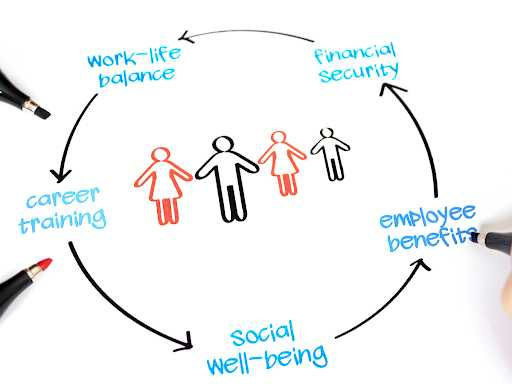How to Motivate Employees in the Workplace
- Aman Chandra
- Oct 22, 2023
- 6 min read
Updated: Oct 29, 2023

Motivating employees in the workplace is a critical aspect of achieving success as an organization. When employees are motivated, they are more productive, engaged, and committed to their work. This leads to higher job satisfaction, reduced turnover, and ultimately, increased profitability. In this comprehensive guide, we will explore various strategies and techniques to effectively motivate employees in the workplace, along with common challenges and advanced methods to ensure long-term motivation. This guide will also delve into the importance of corporate wellness coaching as a tool to enhance employee motivation and overall well-being.
Understanding Employee Motivation
Before delving into specific strategies, it's essential to understand what motivates employees in the workplace. Employee motivation is a complex interplay of various factors, including:
1. Recognition and Appreciation
One of the most potent motivators for employees is recognition and appreciation for their hard work. When employees feel that their efforts are noticed and valued, they are more likely to stay motivated. Create a culture where recognition is not limited to formal awards but is part of everyday interactions.
2. Clear Goals and Expectations
Employees need to have a clear understanding of their roles, responsibilities, and goals within the organization. When expectations are transparent, employees can align their efforts with the company's objectives. Regularly communicate expectations and provide feedback to keep employees on track.
3. Opportunities for Growth and Development

Many employees are motivated by opportunities for personal and professional growth. This can include training, skill development, and the chance to take on new challenges. Establish a learning and development program that supports employees in acquiring new skills and advancing their careers.
4. Work-Life Balance
Maintaining a healthy work-life balance is crucial for employee motivation. When employees have time to relax and recharge outside of work, they are more likely to stay motivated during working hours. Encourage employees to use their vacation days and promote flexible work arrangements when possible.
"The key to work-life balance is not to prioritize what's on your schedule, but to schedule your priorities."
- Stephen Covey
5. Fair Compensation and Benefits
While money isn't the only motivator, fair compensation and benefits are essential for employee satisfaction. Employees need to feel that their efforts are appropriately rewarded. Regularly review compensation packages to ensure they remain competitive.
6. A Positive Work Environment
A supportive and positive work environment can significantly impact employee motivation. This includes factors like teamwork, effective leadership, and a culture of respect. Address any toxic behaviors promptly and foster a workplace where diversity and inclusion thrive.
7. Intrinsic Motivation
Intrinsic motivation, driven by personal satisfaction and a sense of purpose, is a powerful force for many employees. Creating opportunities for employees to find meaning in their work can boost motivation. Encourage autonomy and provide a sense of ownership over projects.
Now that we have a better understanding of what motivates employees let's explore practical strategies to harness these motivators in the workplace.
Practical Strategies to Motivate Employees in the Workplace

1. Foster a Culture of Appreciation
Start by creating a culture of appreciation within your organization. Encourage managers and colleagues to acknowledge and thank employees for their hard work regularly. Simple acts of recognition can go a long way in motivating employees. Consider establishing a "Recognition Day" where exceptional employees are celebrated.
2. Set Clear and Achievable Goals
Ensure that each employee has a clear job description and well-defined goals. These goals should be challenging but attainable, providing employees with a sense of purpose and direction. Regularly revisit these goals through one-on-one meetings to adjust as needed.
3. Provide Opportunities for Skill Development
Invest in employee training and development programs. Encourage employees to acquire new skills and knowledge, and provide opportunities for them to apply these skills in their roles. Establish mentorship programs where experienced employees can guide and inspire newcomers.
4. Promote Work-Life Balance
Encourage a healthy work-life balance by offering flexible work hours, remote work options, and paid time off. Show your commitment to this balance by leading by example. Implement "No Email After Work Hours" policies to ensure employees disconnect and recharge.
5. Fair Compensation and Benefits
Regularly review and adjust employee compensation to ensure it remains competitive within your industry. Additionally, offer a comprehensive benefits package that includes health insurance, retirement plans, and other perks. Consider conducting compensation benchmarking to stay competitive.
6. Create a Positive Work Environment
Promote a positive work environment by fostering open communication, encouraging teamwork, and addressing any conflicts promptly. Ensure that employees feel valued and respected by providing a safe and inclusive workplace. Conduct regular employee surveys to gauge the workplace atmosphere.
"The most important thing is to create a culture where people feel safe to take risks and learn from their mistakes." - Satya Nadella
7. Tap into Intrinsic Motivation
Identify ways to tap into employees' intrinsic motivation. Allow them to take ownership of projects, provide opportunities for innovation, and encourage them to find meaning in their work. Establish "Innovation Days" where employees can work on creative projects unrelated to their daily tasks.
Advanced Strategies for Employee Motivation
While the strategies mentioned above are effective for most organizations, some advanced techniques can further enhance employee motivation.
8. Empowerment and Autonomy
Empower employees by giving them more autonomy in decision-making and problem-solving. When employees feel trusted and empowered, they are more likely to take ownership of their work and stay motivated. Establish cross-functional teams to work on high-impact projects independently.
9. Regular Feedback and Performance Reviews
Implement a robust performance management system that includes regular feedback and performance reviews. Constructive feedback helps employees understand their strengths and areas for improvement, enabling them to grow and stay motivated. Encourage 360-degree feedback to provide a holistic view of performance.
10. Employee Recognition Programs
Consider implementing formal recognition programs that reward exceptional performance. These programs can include monetary rewards, certificates, or other tangible tokens of appreciation. Hold quarterly award ceremonies to publicly acknowledge outstanding employees.
11. Career Development Paths
Provide employees with a clear career development path within the organization. When employees see opportunities for advancement, they are more likely to remain motivated and committed. Offer mentorship programs and job rotation opportunities to broaden their skills.
"Don't be afraid to fail. It's not the end of the world, and in many ways, it's the first step toward learning something and getting better at it." - Jon Hamm
12. Wellness and Well-being Programs
Invest in wellness and well-being programs to support employees' physical and mental health. A healthy workforce is a motivated workforce. Provide gym memberships, access to counseling services, and stress management workshops.
13. Employee Engagement Surveys
Regularly conduct employee engagement surveys to gather feedback and insights into employee satisfaction and motivation levels. Use the results to make informed improvements. Act upon survey findings promptly and communicate changes transparently.
14. Flexible Work Arrangements
Offer flexible work arrangements, such as compressed workweeks or job-sharing, to accommodate employees' diverse needs. Flexibility can significantly contribute to employee motivation. Create a "Flexible Work Policy" to outline expectations and guidelines.
15. Social and Team-building Activities
Organize social and team-building activities to strengthen relationships among employees. A cohesive team is more likely to be motivated and perform well. Plan regular team-building events and encourage cross-departmental collaboration.
Conclusion
Motivating employees in the workplace is not a one-size-fits-all endeavor. It requires a comprehensive approach that takes into account individual differences, organizational culture, and changing work environments. By recognizing the diverse factors that drive employee motivation and implementing the strategies discussed in this article, you can create a workplace where employees are motivated, engaged, and eager to contribute to your organization's success.
Remember that employee motivation is an ongoing process that requires continuous attention and adaptation to ensure long-term success. The efforts you invest in motivating your employees will not only lead to a more satisfied and productive workforce but also contribute significantly to the growth and prosperity of your organization. Stay committed to fostering a culture of motivation, and you will reap the rewards of a motivated and inspired team.
About the author, Aman Chandra -

Dealing with the separation of his parents at the age of two years and battling crippling anxiety and obsessive-compulsive disorder (OCD) at the age of twelve years are just a few of the challenges that Aman dealt with. With a burning desire to learn “how to be happy in life” despite there being so much suffering, Aman began a life-long journey of studying under various global personal and spiritual growth masters, such as Eckhart Tolle and Tony Robbins. With this was born his tried-and-tested Bulletproofing-Happinessᵀᴹ formula, and he uses the same to coach seekers across the globe on how to overcome emotional challenges and live a truly happy life.
